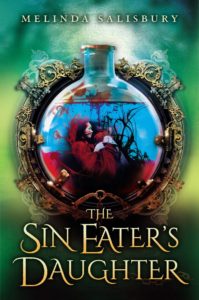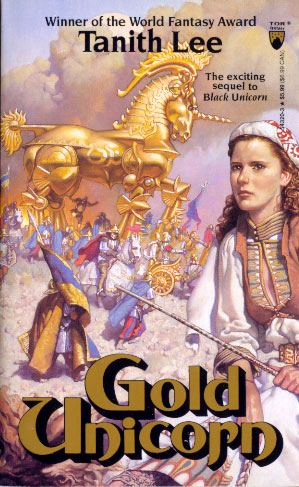
The Sin Eater’s Daughter by Melinda Salisbury was a thoroughly enjoyable read — one of my favorites recently.
Seventeen-year-old Twylla lives at court as Duanen Embodied, the living embodiment of a goddess. Her touch is poison, and it is her responsibility to mete out punishment to traitors of the kingdom. She’s engaged to the prince, who is immune to the poison in her touch, but she’s only met him a couple of times. To make things even more fun, she’s constantly at the mercy of the Queen, who can only be described as diabolical. As you might have guessed, Twylla’s life isn’t awesome, but it improves somewhat with the arrival of Lief, her new guard. Lief is funny, charming, handsome, AND he doesn’t treat Twylla like a terrifying monster. Intrigue! Romance!
I think this summary actually leaves out my favorite part of the book, which is the profession of Twylla’s mother: Sin Eater. In Salisbury’s world, after a person dies, their sins must be eaten before their soul can be set free. Every sin has a particular food associated with it, and a person’s sins are set on top of their coffin when they die. It is the Sin Eater’s job to devour these wrongs. Twylla’s mother is a vast, intimidating, opinionated force of nature that we sadly see very little of in this book—but I fully expect that will be remedied in subsequent installments.
The chemistry between Lief and Twylla is developed very well — one of the first romances in YA fantasy I have actually rooted for in a long time! Salisbury clearly has a skill for writing relationships that makes this one come alive. I especially appreciated that she didn’t gloss over the one aspect of teen romance most overlooked in YA: lust. Pretty sure the presence of lust is the biggest discrepancy between actual teen relationships and those depicted in books. The author handles it well in The Sin Eater’s Daughter — I promise you’ll be engrossed! I was also a fan of her plot twists and general worldbuilding—I will definitely be picking up the sequel when it comes out.
Still, The Sin Eater’s Daughter is not without its faults. To begin with, I am a bit tired of fetishization of red hair (an issue both historically and in modern times) in fantasy/sci-fi literature. The color of Twylla’s hair is one of the reasons given for why she was chosen as Duanen Embodied and is brought up repeatedly throughout the book. Why is it that so often in books boys get separated out as exceptional because they possess some special power or ability, and girls get separated out because of how they look? I mean, red hair is cool and all, but it’s not as cool as being able to talk to animals or fly or something.
In general, Twylla was pretty objectified throughout the entire book. I’m seriously hoping that in the sequel she gets a bit more agency. She does become more independent as the story goes on, so I’m almost certain this was a narrative choice—part of the story is about Twylla finding her strength. I’ll be interested to see how that plays out.
Don’t get me wrong—I really like this book and would recommend it to anyone who is a fan of the genre! I just also believe it’s important to point out problematic features in media you’re a fan of—especially in media you’re a fan of. The Sin Eater’s Daughter is definitely worth a read.



